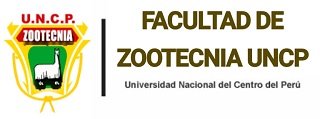Adjust your strategy based on performance data to improve results. If you operate a local business, optimizing for local search is crucial. As you can now see, a page ranking at the top of Google isn’t just effortlessly streaming along. There’s a lot of work that goes into it, and this is for every page on your site.
Unlock your site’s potential with an actionable SEO audit…
Keywords that are placed closer to the beginning of the title hold more weight. It’s the first thing Google reads, so it will immediately know the context of your page. This also immediately tells your audience about the subject of your page.
This helpful tool will point out areas where your site speed can be improved so you know what to work on. To improve user experience and search engine crawlability, URLs should be short, descriptive, and keyword-rich. Internal linking helps search engines discover and index your web pages while establishing a hierarchy and spreading link equity throughout your site. To simplify the process, use SEOBoost’s content optimization feature to ensure your content aligns with SEO best practices and user intent. After analysis, the tool will help you format your content for optimal user experience and suggest changes based on an overall content quality score.
Download The Ultimate On-Page SEO Checklist
When you have links to related content to provide more context or information on a topic, people are likely to click on them to learn more. Create pages that are optimised for relevant keywords and then group them BHS Links together so searchers (and Google) can find them. For links and guest posts, and some social media signals, you will need other people to organically help you or agree to do so once you reach out to them. Researching and analyzing your website is an important part of our process.
- Page speed can be impacted by many factors, such as redirects, image quality, CSS and JavaScript files, etc.
- It includes a complete list of secondary and LSI keywords, their importance, and the number of times you can incorporate them around your content for the best results.
- You can add code snippets to your HTML to ensure that Google indexes your images properly for any keywords mentioned.
- This ultimately helps Google absorb more information about your website and potentially rank it higher on the search engine results pages.
- Search engines view Off-Page SEO signals, like backlinks and social engagement, as indicators of a website’s authority and relevance.
Examples of on-page SEO include headings and subheadings, internal linking, and images and alt-text. These are all elements on the page that, when optimized, can help your website content rank higher on search engines—and drive more traffic. On-page SEO focuses on optimizing individual pages to improve search visibility and user experience.
For any case with linking, the anchor text should be specific to the page you’re linking to and contain the keyword it’s targeting. Aligning content with user search intent ensures that the content meets the needs of the audience at various stages of their decision-making process. By avoiding these pitfalls and applying robust keyword research, you can create content that not only ranks well but also genuinely serves your target audience’s needs. Remember, the key to effective on-page SEO is not to trick search engines but to create a valuable and accessible experience for your users. Invest in good practices and avoid shortcuts for sustainable SEO success.

